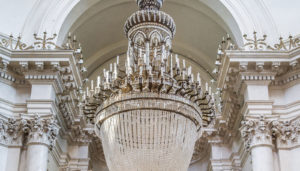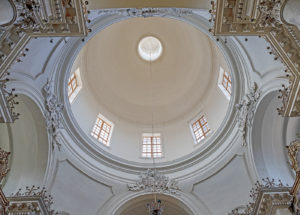The interior of the church of
St. Agatha
is a visual synthesis of Baroque principles.
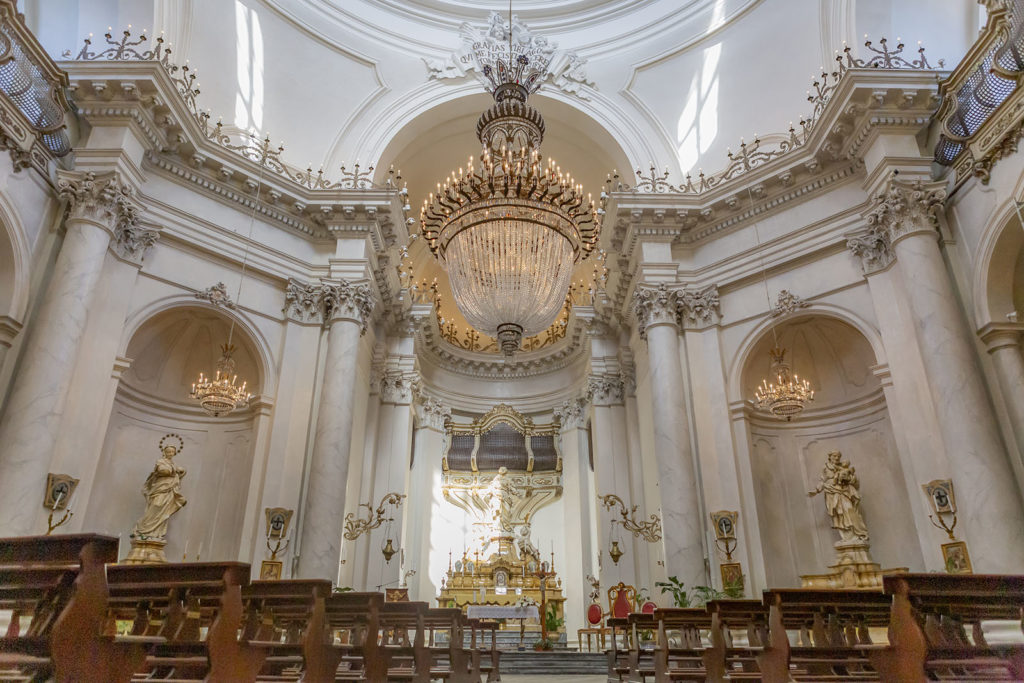
The church has a central,
a Greek cross
plan. It runs lengthways on a 16-metre-diameter circle around which four other circles are joined that form the side niches, according to the main and transversal axes.
The side niches create effects of contraction and expansion in the space and house 4 altars in yellow Castronovo marble. Reserved for all masonry and architectural structures, the luminous white marble is interrupted only by the chromatic elements in the decorations: the yellow marble of the altars, the sculptures and the decorated floor.
Created by Ignazio Marino’s workshop according to one of his designs, the splendid floor is made of black and white marble and covers the entire surface with an abstract design that points towards the centre of the church.
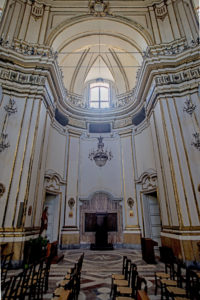
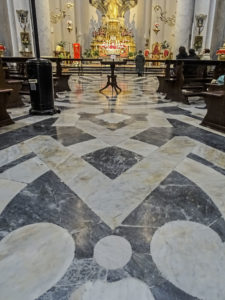
The optical effect created by the floor’s design is reminiscent of the design of the beautiful lantern above, which projects light onto the floor.
The space features
Doric pilasters
placed in the background and
composite order
columns that stand out in the foreground and along which runs a broken
trabeation
.
The trabeation is surmounted by a series of wrought iron candelabra that create a sinuous play of light. The entire space is completed by the
dome
, once covered externally with square glazed terracotta tiles, removed by the 2008 restoration work. It is divided by double ribs that converge in the elegant lantern.
